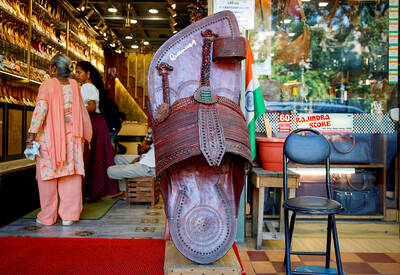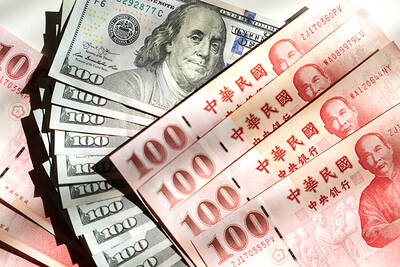Konica Corp and Minolta Co plan to merge by August, joining forces as digital cameras made by Sony Corp and Taiwanese rivals erode their market share.
The merger, which may be worth as much as Japanese Yen 195 billion (US$1.6 billion) based on Minolta's market value and debt, would create a maker of cameras, printers and copiers that still only ranks fourth in domestic sales.
"It's a big question mark what kind of benefit" the merger will bring, said Yoshiya Morimoto, who helps manage Japanese Yen 30 billion (US$249 million) in equities at Japan Investment Trust Management Co and sold his Konica stake in December.
"Whether it's digital cameras or copy machines, neither Konica or Minolta has a competitive advantage," he said.
The popularity of digital cameras is eroding sales of traditional cameras and photographic film by Konica and Minolta, which don't rank among Japan's top-five digital camera makers.
Konica shares fell as the company is joining a rival that has suffered two years of losses and has half its market value. Minolta stock rose.
Konica President Fumio Iwai will head a holding company that will be formed by Konica and into which Minolta's operations will be merged, according to a joint statement distributed through the Tokyo Stock Exchange.
The new company will target joint sales of Japanese Yen 1.3 trillion ($US10.9 billion) by the end of March 2006. It plans to cut 4,000 jobs by 2005.
"Minolta will benefit on the financial side," said Seiichiro Iwamoto, who manages Japanese Yen 100 billion at Fuji Investment Management Co, and who doesn't hold shares of either company.
Minolta's shares rose 1.5 percent to close at Japanese Yen 536 on hopes the merger would help shore up its finances after losses in the past two fiscal years. Konica's shares closed down 0.8 percent at Japanese Yen 864.
Sales of Japan-made digital cameras surged 44 percent in the 11 months ended in November from a year ago, compared with a 27 percent decline for film-based cameras, according to the Tokyo-based Camera and Imaging Products Association.
The new company, with annual sales of Japanese Yen 1.05 trillion in the fiscal year ended March 31, would lag Canon Inc, Fuji Photo Film Co and Ricoh Co in Japan as a camera and copier maker.
Japan's electronics makers are joining together to fend off competition from lower-cost producers in South Korea and Taiwan such as Samsung Electronics Co and Acer Inc.
Hitachi Ltd and Mitsubishi Electric Corp, Japan's third- and fourth-largest chipmakers, will merge most of their semiconductor businesses in April.
Toshiba Corp and Matsushita Electric Industrial Co in April 2002 merged their liquid-crystal display businesses to reduce costs.

MARKET LEADERSHIP: Investors are flocking to Nvidia, drawn by the company’s long-term fundamntals, dominant position in the AI sector, and pricing and margin power Two years after Nvidia Corp made history by becoming the first chipmaker to achieve a US$1 trillion market capitalization, an even more remarkable milestone is within its grasp: becoming the first company to reach US$4 trillion. After the emergence of China’s DeepSeek (深度求索) sent the stock plunging earlier this year and stoked concerns that outlays on artificial intelligence (AI) infrastructure were set to slow, Nvidia shares have rallied back to a record. The company’s biggest customers remain full steam ahead on spending, much of which is flowing to its computing systems. Microsoft Corp, Meta Platforms Inc, Amazon.com Inc and Alphabet Inc are

Luxury fashion powerhouse Prada SpA has acknowledged the ancient Indian roots of its new sandal design after the debut of the open-toe footwear sparked a furor among Indian artisans and politicians thousands of miles from the catwalk in Italy. Images from Prada’s fashion show in Milan last weekend showed models wearing leather sandals with a braided design that resembled handmade Kolhapuri slippers with designs dating back to the 12th century. A wave of criticism in the media and from lawmakers followed over the Italian brand’s lack of public acknowledgement of the Indian sandal design, which is named after a city in the

The US overtaking China as Taiwan’s top export destination could boost industrial development and wage growth, given the US is a high-income economy, an economist said yesterday. However, Taiwan still needs to diversify its export markets due to the unpredictability of US President Donald Trump’s administration, said Chiou Jiunn-rong (邱俊榮), an economics professor at National Central University. Taiwan’s exports soared to a record US$51.74 billion last month, driven by strong demand for artificial intelligence (AI) products and continued orders, with information and communication technology (ICT) and audio/video products leading all sectors. The US reclaimed its position as Taiwan’s top export market, accounting for

INVESTOR RESILIENCE? An analyst said that despite near-term pressures, foreign investors tend to view NT dollar strength as a positive signal for valuation multiples Morgan Stanley has flagged a potential 10 percent revenue decline for Taiwan’s tech hardware sector this year, as a sharp appreciation of the New Taiwan dollar begins to dent the earnings power of major exporters. In what appears to be the first such warning from a major foreign brokerage, the US investment bank said the currency’s strength — fueled by foreign capital inflows and expectations of US interest rate cuts — is compressing profit margins for manufacturers with heavy exposure to US dollar-denominated revenues. The local currency has surged about 10 percent against the greenback over the past quarter and yesterday breached